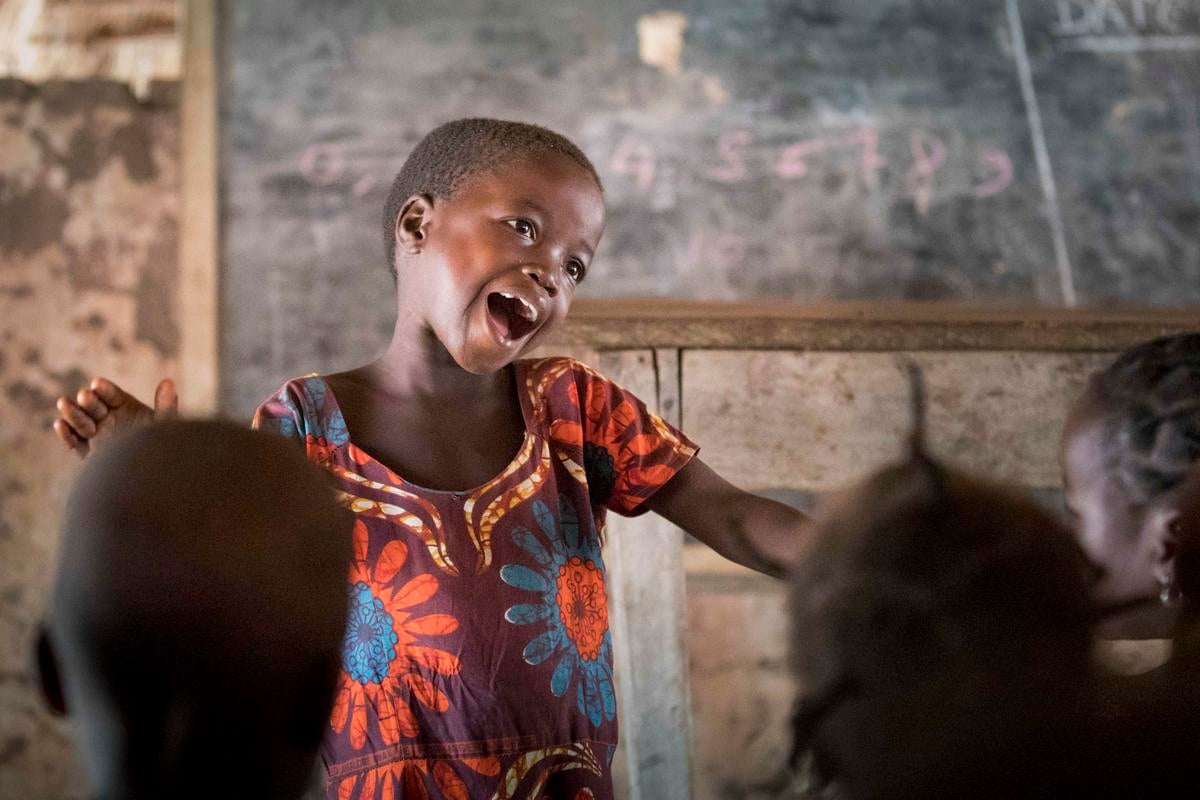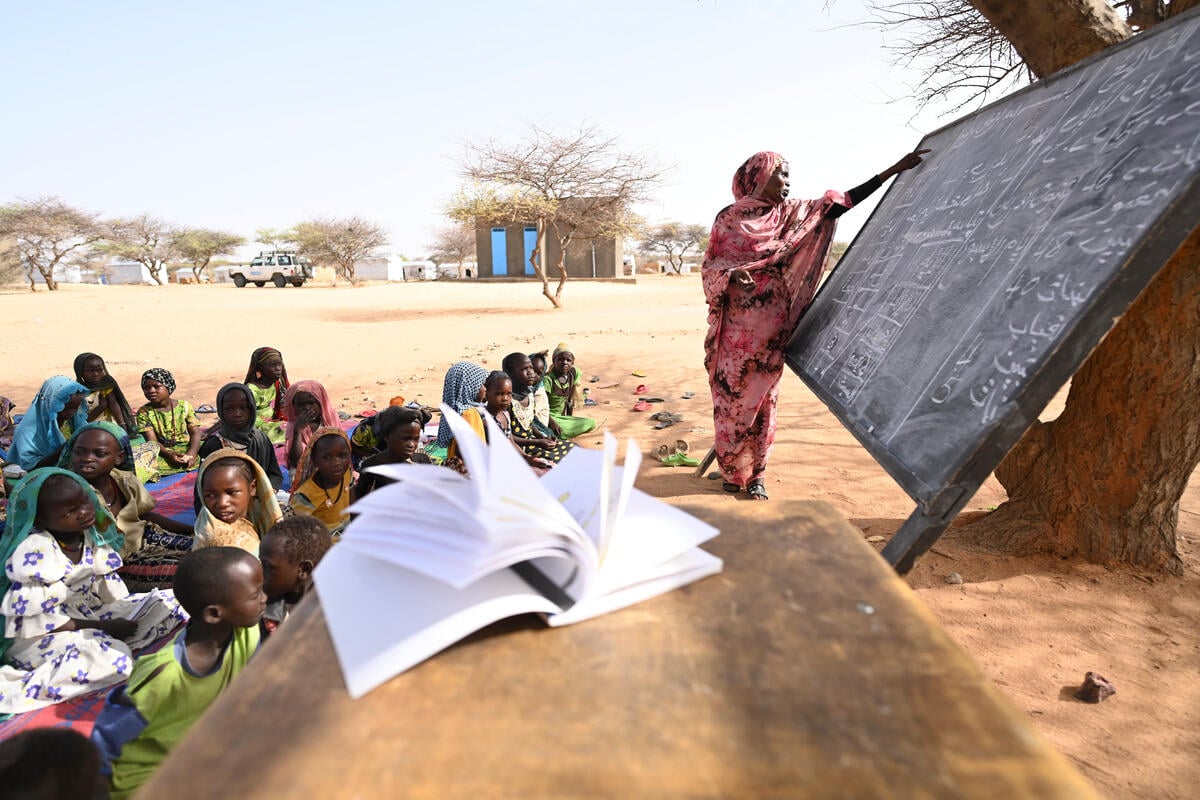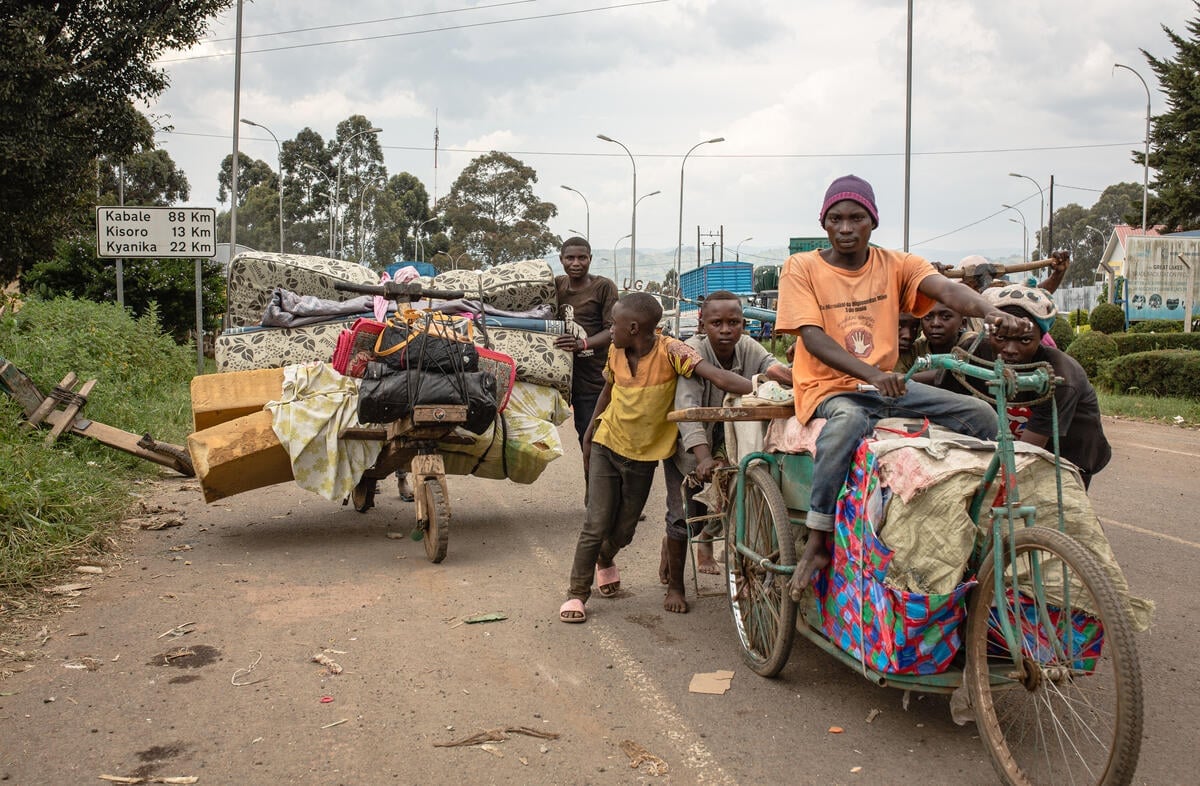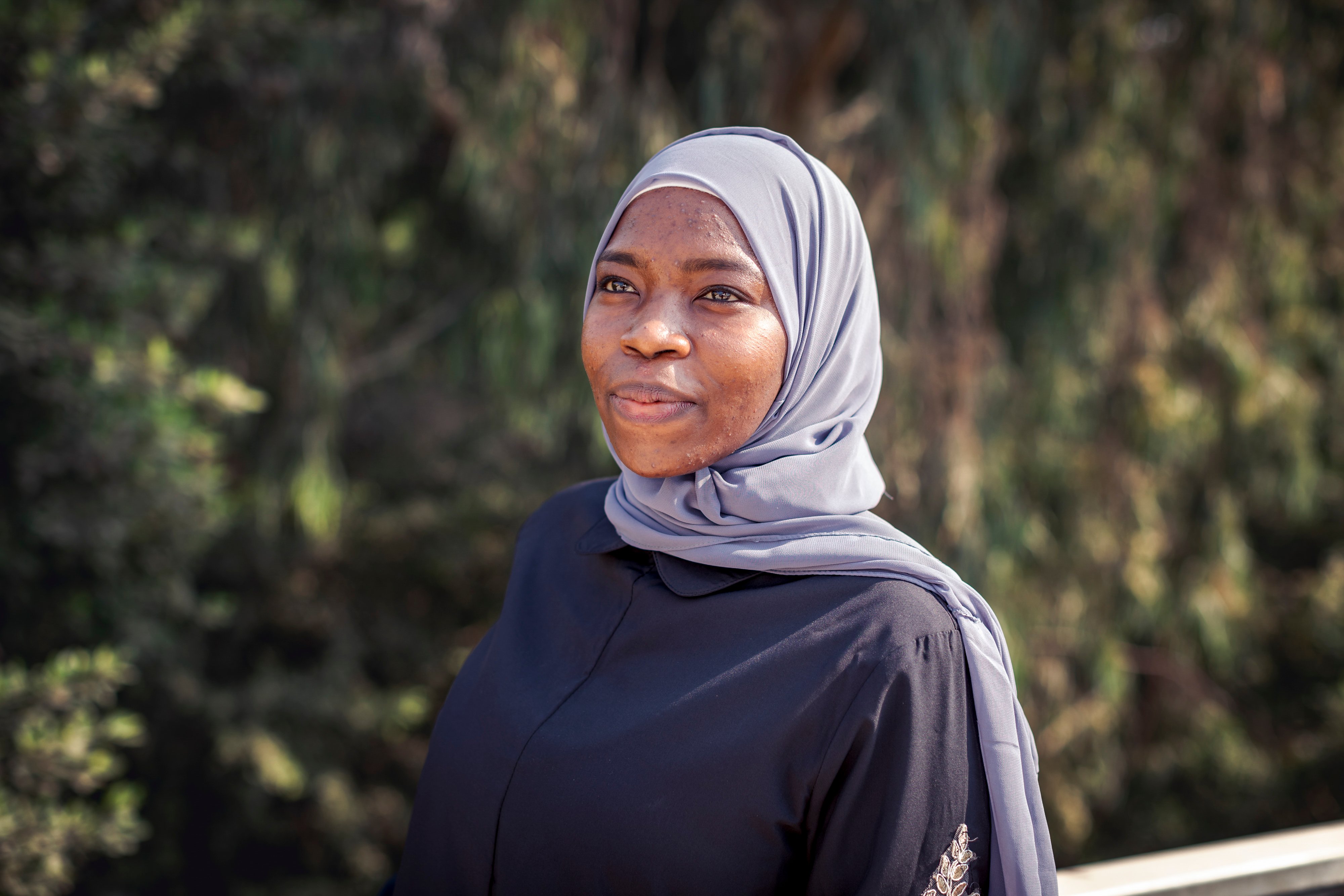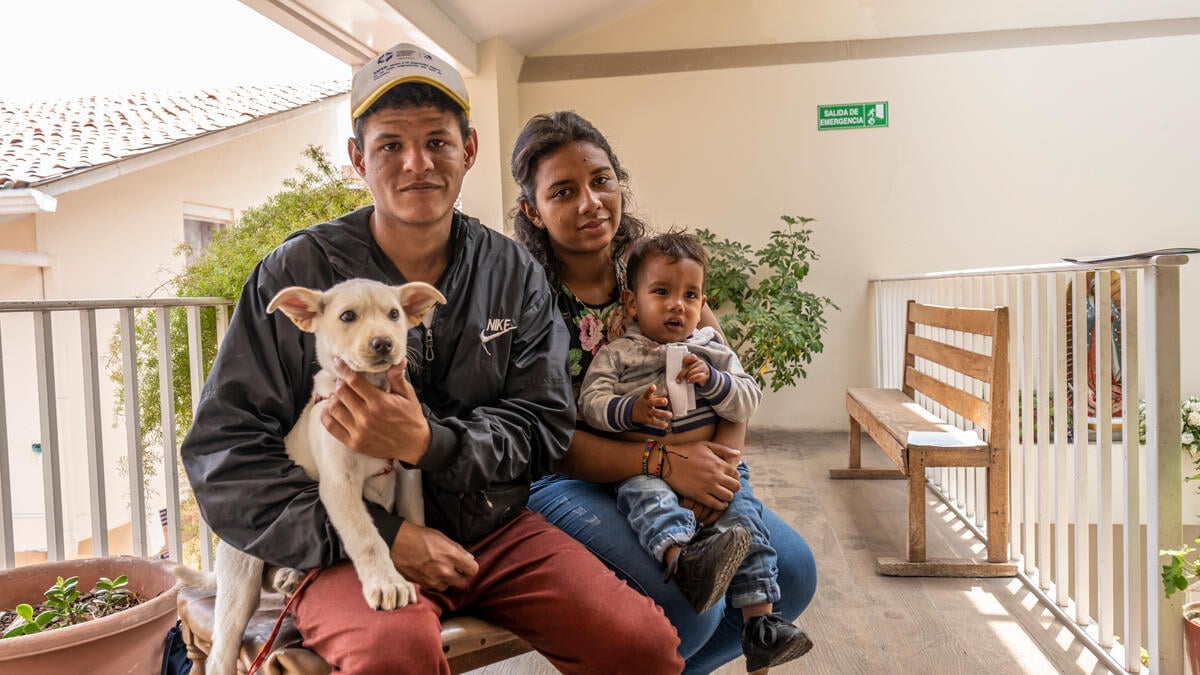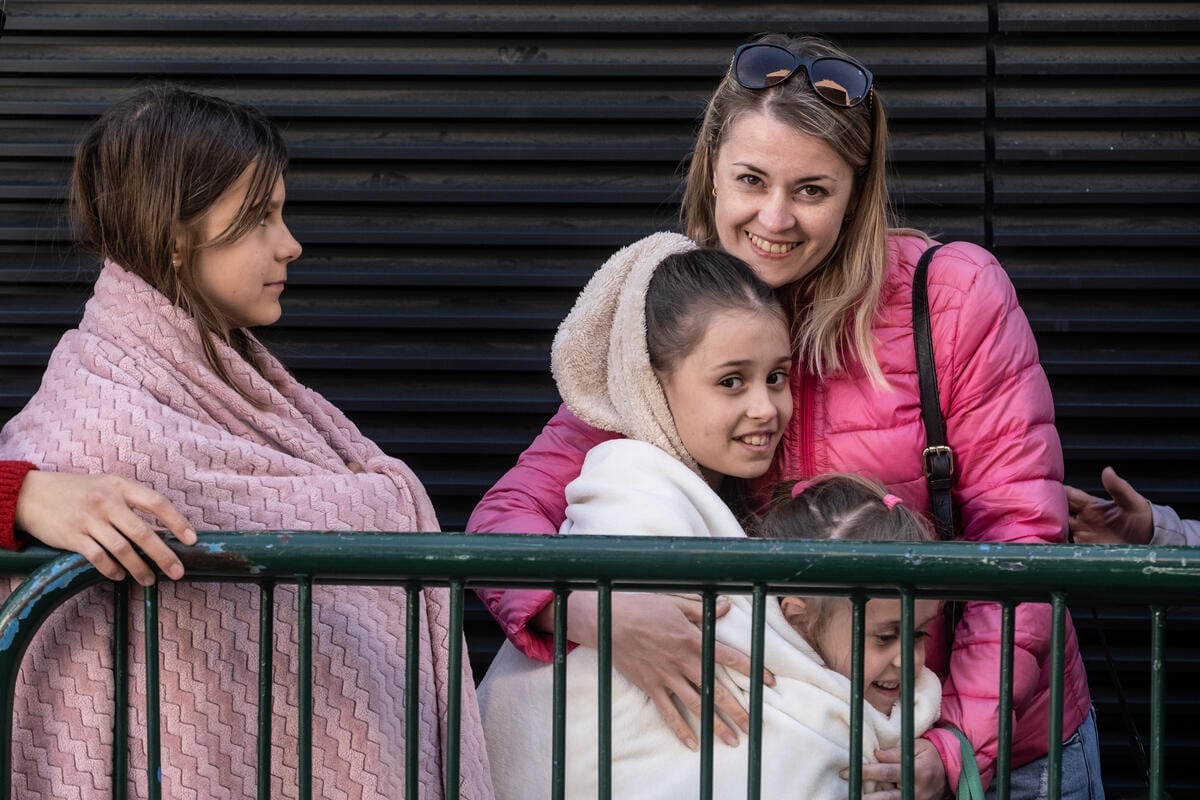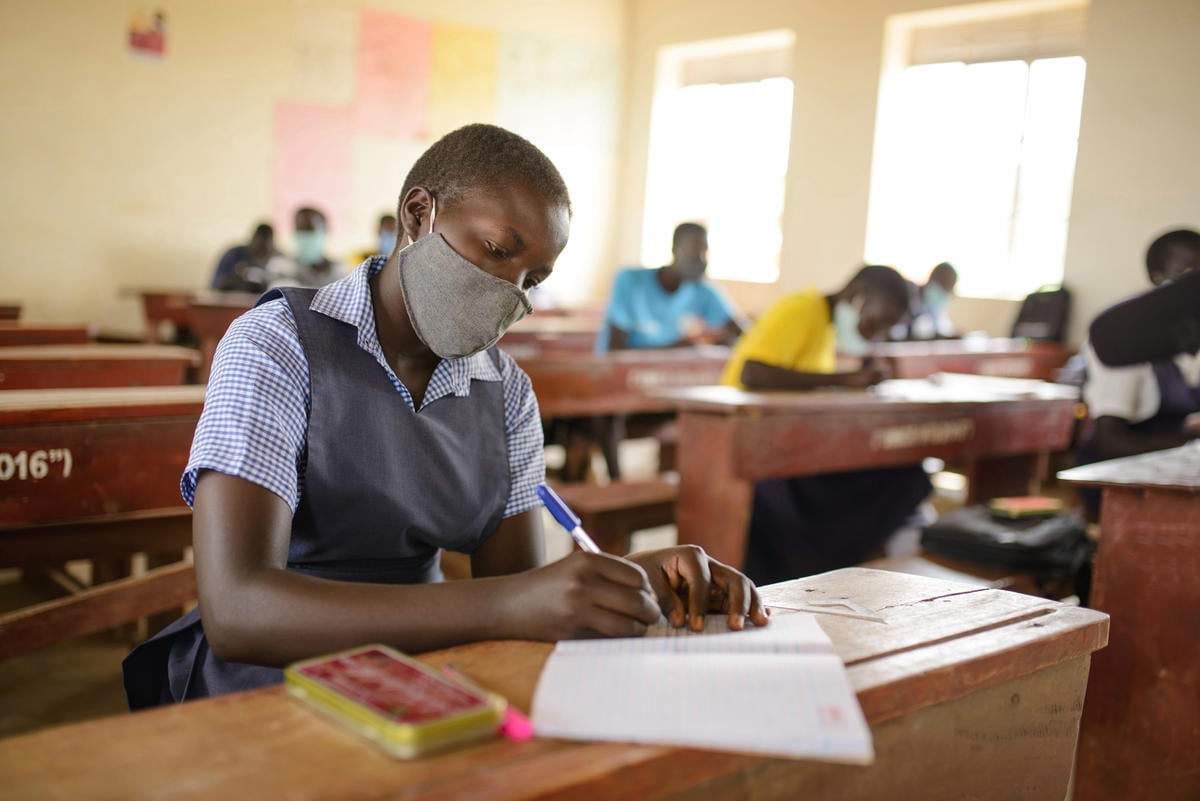Schools in Colombia become integration spaces for refugee and displaced youth
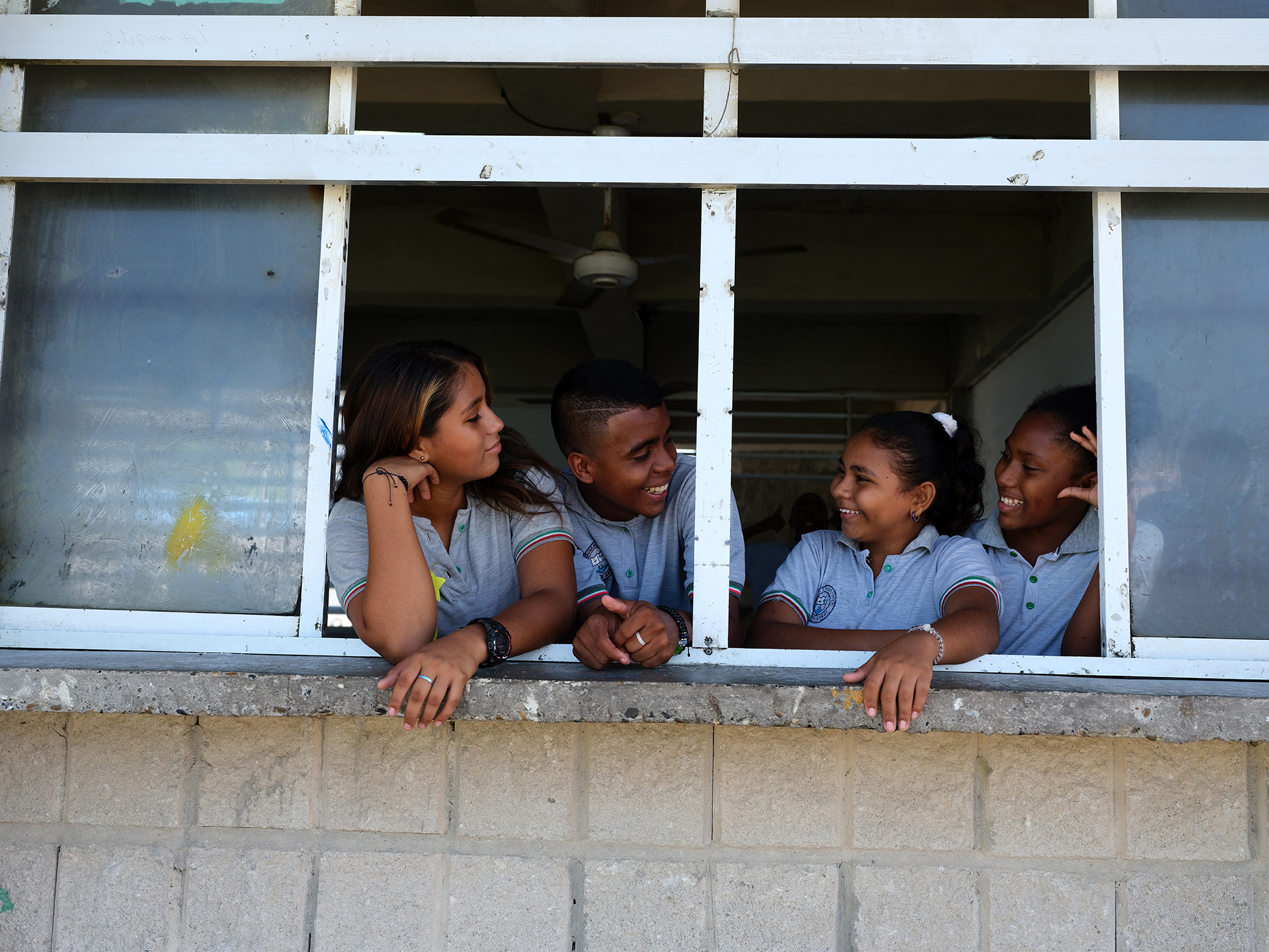
Schools in Colombia become integration spaces for refugee and displaced youth
At the Tierra Bomba school, Chelsea (14), Adriana (14), Bryan (16), and Mariangelis (13) represent diversity and inclusion, as they are internally displaced people, host community members, as well as Venezuelan refugees and migrants.
“Providing access to education is a conviction and a responsibility of those of us who hold a public office. We must guarantee the right to truly exercise it, live it, and enjoy it. This is a right to which everyone is entitled”, asserted Professor Alberto Cassiani when talking about what inspired him to advocate for the integration of refugees, displaced, and returnee children and youth in the schools in Cartagena.
Alberto is originally from San Basilio de Palenque, an Afro-Colombian community. He recalls that, when his parents were forced to flee, they were hosted by a welcoming land, but as people of African descent, they also endured racism and discrimination. When he was a student, Alberto was also a victim of racism and discrimination at school. This experience has allowed him to understand the challenges that young refugee and displaced people face at school.
Today, as a teacher with over thirty years of experience, Alberto is the president of Institución Etnoeducativa e Inclusiva Antonia Santos [Inclusive and Ethno-Educational Antonia Santos Institution], in Cartagena, and he advocates for the inclusion of refugees and displaced people in the Colombian education system. Alberto is responsible for four school sites, offering pre-school, primary, and secondary education; more than 2,300 students go to these sites, a 30% of which are displaced people.

Professor Alfonso Cassiani has actively advocated for the integration of refugee, migrant, and returnee students in Cartagena.
“All students – girls, boys, and young people – are entitled to certain rights,” highlighted Professor Alberto when talking about the importance of accessing and staying in the education system.
This professor says that, in 2019, given the arrival of Venezuelan refugees and migrants, as well as Colombian returnees, several families began to knock on the schools’ doors. One of the greatest challenges they faced was granting access to a wide number of displaced children, adolescents, and young people, as well as ensuring that no one stayed at home because their situation in the country had not been regularized.
“This is all about acknowledging that another human being is in need, and that they have rights. Therefore, we’re not doing them a favor,” asserted Professor Alberto.

Adriana Pita, UNHCR Education Associate, chats with the president of the Tierra Bomba school in Cartagena, together with Glendis Paredes, pedagogical advisor to the Pedagogy and Protection for Refugee and Migrant Children from a Mixed Approach project.
The project Pedagogía y Protección para la Niñez Refugiada y Migrante con Enfoque Mixto (PPN) [Pedagogy and Protection for Refugee and Migrant Children from a Mixed Approach] was created in 2019 with the purpose of creating inclusive environments, as well as improving and ensuring access, permanence, and continuity in education for refugee, migrant, and returnee children and adolescents. Together with its partner, Opción Legal, the UN Refugee Agency has led this project, the purpose of which is that schools become aware of mixed movements and inclusive education.
This project has been carried out through the implementation of specialized programs designed for this particular context. At the same time, the project offers technical support to school staff. Consequently, the staff has been able to adapt to the curricula and has embraced inclusion and interculturality as essential competences in education. This approach has had a positive impact on teaching processes, thus contributing to ensure access to quality education and promoting permanence.
“This is all about acknowledging that another human being is in need, and that they have rights.”
Text and media 5
“This project has helped us in teaching students to respect the value of interculturality and to strengthen interpersonal relationships. It has also helped us in minimizing social and cultural barriers in the classroom.”
Professor Astrid has been deeply involved in facilitating the inclusion of refugee, migrant, and returnee students. She has focused on defending their right to education and on promoting resilience.
Access to education and other integration solutions
Institución Educativa de Tierra Bomba is one of the schools in Cartagena that has benefited from the project. This school is on an island off the Caribbean coast of Colombia; it has more than 1,000 primary and secondary students (most of whom are Afro-Colombian, returnees, and internally displaced people due to the armed conflict, as well as Venezuelan refugees and migrants).
Astrid, who was displaced as a child and has been an English teacher for over 18 years, attends to more than 300 students at this school. She took part in the implementation of the project, which according to her, will transform the education system, as it has allowed greater inclusion of displaced students.
“This project has helped us in teaching students to respect the value of interculturality and to strengthen interpersonal relationships. It has also helped us in minimizing social and cultural barriers in the classroom,” shared professor Astrid.

Students in the morning shift leave the Tierra Bomba school, which offers several shifts to accommodate more than 1,880 students.
Professors have been accompanied by the “Pedagogical Route”, a guide comprising three modules on accessibility, acceptance, and adaptability. This guide, which was provided by UNHCR, allows school authorities to identify the schools that have the highest number of refugee, migrant, and returnee students. Afterwards, each school’s president and staff must assess the school’s needs and design a working plan.
Through a thematic action plan, they establish activities for better coexistence, create innovative curricula, advocate for educational policy, empower refugee and displaced children, and develop community activities.
“Social interaction sums it up.”
The Tierra Bomba school staff report that they have carried out several activities – such as theater performances, tree planting, beach clean-ups, and recreational activities – to foster interaction among students; this has contributed to reducing social barriers.
“Social interaction sums it up. There’s a sense of harmony in the classroom. Xenophobia and discrimination used to be practiced there, but both have significantly decreased, because of this, it is now easier for teachers to teach,” concluded Professor Astrid.
Text and media 7
“I would like to study human rights, because refugees and migrants are mistreated when they go to other countries; sometimes they can’t even go to the hospital because they lack a permit and the treatment they receive is not based on values. So, I want to study that, to ensure they have a right to everything, regardless of whether they are in a different country.”
Mariangelis proudly carries the Colombia flag with a star, a symbol granted to her by the school due to her outstanding performance in biology and her discipline as a student.
Unlocking the potential of displaced students
“I would like to study human rights, because refugees and migrants are mistreated when they go to other countries; sometimes they can’t even go to the hospital because they lack a permit and the treatment they receive is not based on values. So, I want to study that, to ensure they have a right to everything, regardless of whether they are in a different country,” said Mariangelis, a student at the Tierra Bomba school.
Originally from Caracas, Venezuela, Mariangelis is in eighth grade. She has lived in Colombia for the last four years and she has attended Tierra Bomba school for three of those years. She fled Venezuela and embarked on a difficult journey together with her mother and her two brothers. Nonetheless, she is deeply grateful for having received protection on the island.

“I enjoy studying and profiting from the opportunity to connect with people from different backgrounds,” said Chelsea, who is 14 years old.
“It’s been alright. The people here are cool. Some treat me badly, but others support me and treat me well,” said Mariangelis when reflecting on her experience at the Tierra Bomba school. Mariangelis acknowledges the kindness shown by people she has met.
Since 2019 (until July 2023), the project PPN has reached more than 11,000 people in school communities in Colombia. The project has been implemented in nine departments across the country, and it has benefited 13,000 students, 8,000 families and more than 300 schools. Additionally, more than 8,000 people have received training, including teachers, counselors, as well as managers and directors. Lastly, an alliance with more than 500 local officials of the Ministries of Education has been created.




